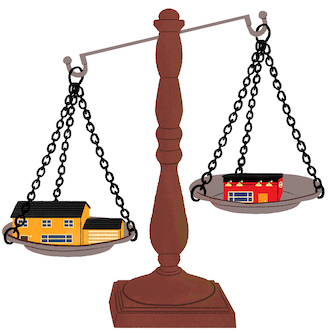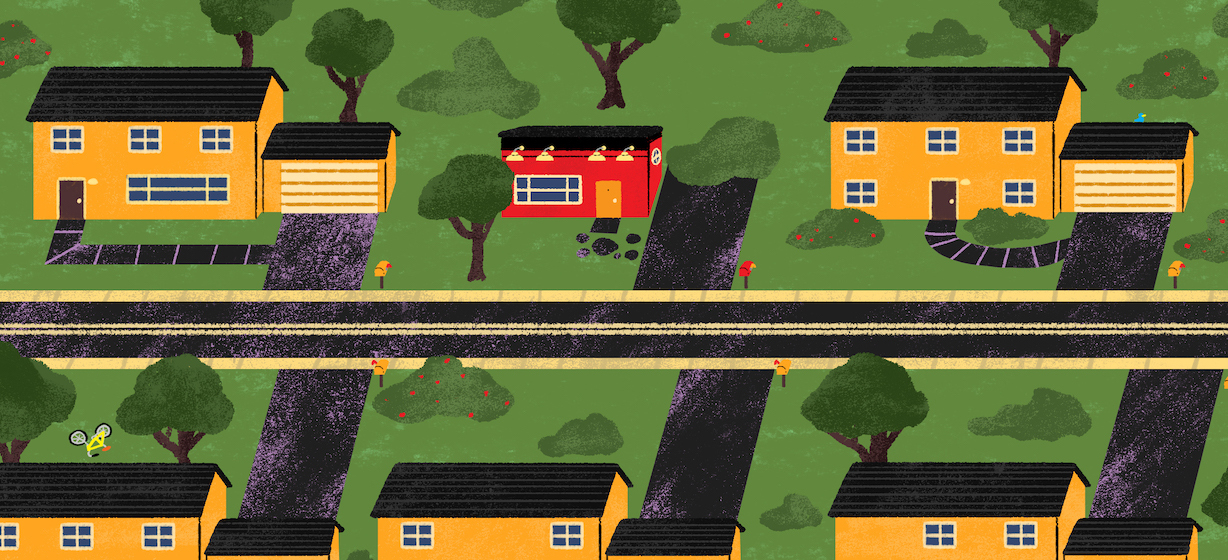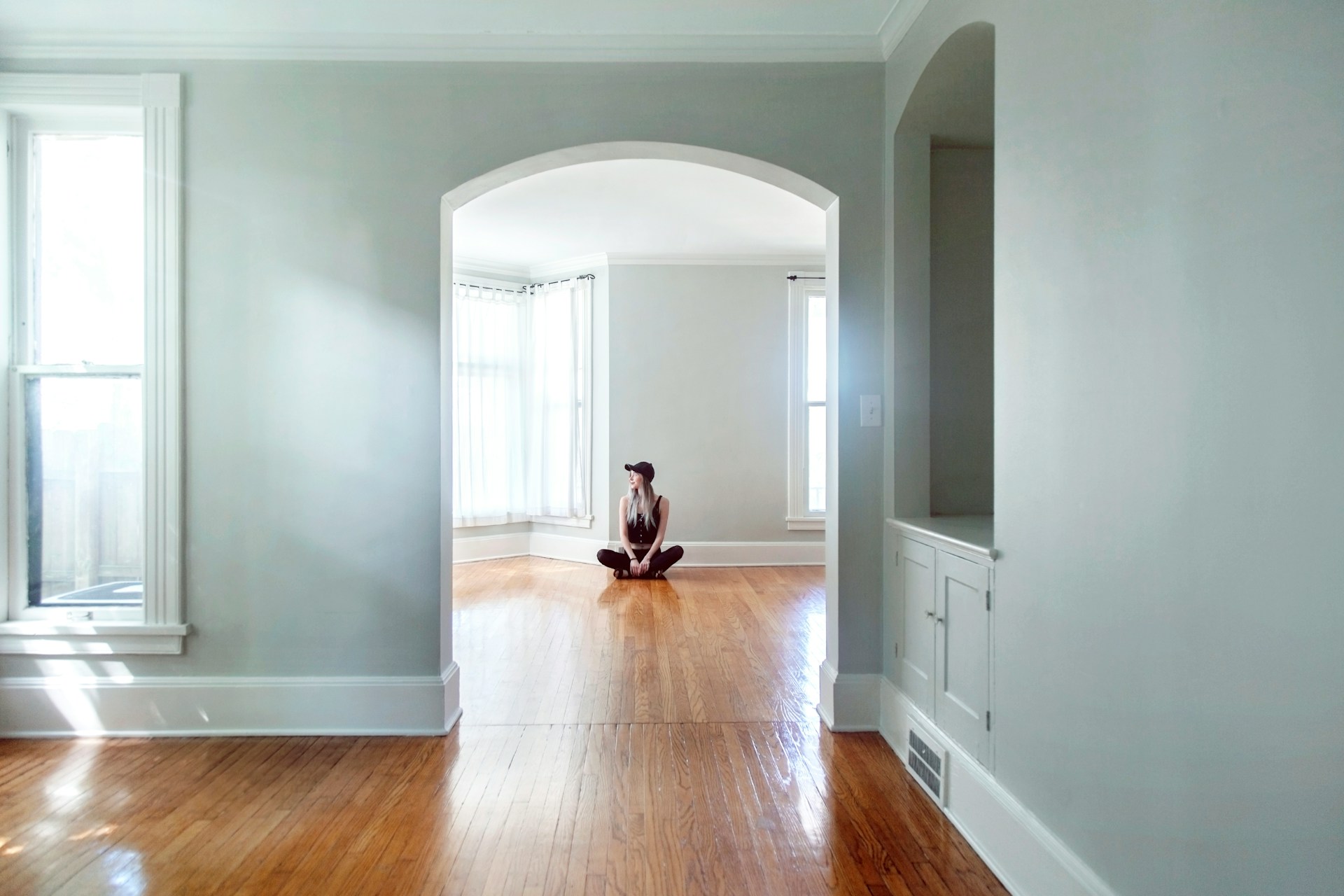Key Findings
- Tiny homes are usually under 600 square feet, though the average size of a tiny house for sale in the US measures just 225 square feet
- The average tiny home in America costs $52,000, 87% cheaper than a regular home
- Per square foot, however, tiny homes are 62% more expensive than full-size homes
- Tiny houses are cheapest in North Dakota ($28,000), but Arkansas ($31,700) has the lowest price per square footage at $109 per square foot
- Hawaii has the most expensive tiny real estate, average home costing over $149,000 or $490 per square foot
- Tiny homes are most affordable in North Dakota, New Hampshire, and New Jersey where they cost less than 50% of an average annual household income
- Colorado (-4%) and Hawaii (-3%) are the only states where tiny homes cost less per square foot than regular homes
- In Massachusetts, tiny homes cost 91% less than regular homes, the biggest price difference than any other state
During the pandemic, a survey by IPX 1031 found as many as 86% of American first-time home buyers would consider buying a “tiny house” as their first home, citing affordability, efficiency, and eco-friendliness as their top considerations.
More recently, the post-pandemic housing boom has also manifested itself in the increased demand for these small living spaces. According to the Wall Street Journal, tiny house listings grew by an average of 8.6% a year since 2001. There are now more than 1.4 million homes that can be classified as “tiny”.
But what are tiny homes? How tiny are they actually? And are they really that much more affordable than their full-size counterparts?
What Are Tiny Homes and Who Is Buying Them?
Tiny houses probably reached their peak popularity when the TV show “Tiny House Nation” aired on Netflix in 2019. Small homes, typically under 600 square feet, are typically built on trailers (so they can be towed to wherever the owner’s heart desires). They are occasionally built on foundations like full-size, immovable homes.
“Another thing worth noting about the affordability of tiny homes is that they actually work out pricier if you look at how much you’re paying per square foot.”
Born out of the minimalist “less is more” narrative, the tiny house movement has popularized the idea that one can fit their life in a tiny house and enjoy it without the outsize expense of owning a full-size home.
 It’s also worth noting that like minimalism in general, the tiny house movement has historically struggled to differentiate itself from class privilege, due to its gentrification of lifestyles typically associated with poverty. Tiny homes are widely touted for their reduced carbon footprint and ability to serve as an affordable living option, both feats that smaller homes and mobile homes have always accomplished, yet which have never previously been socially linked to people not able to afford regular-sized homes.And yet it’s exactly this affordability which has in recent years attracted the attention of a greater number of Americans looking to buy a home.
It’s also worth noting that like minimalism in general, the tiny house movement has historically struggled to differentiate itself from class privilege, due to its gentrification of lifestyles typically associated with poverty. Tiny homes are widely touted for their reduced carbon footprint and ability to serve as an affordable living option, both feats that smaller homes and mobile homes have always accomplished, yet which have never previously been socially linked to people not able to afford regular-sized homes.And yet it’s exactly this affordability which has in recent years attracted the attention of a greater number of Americans looking to buy a home.
Statistically, Millennials are especially drawn to tiny homes due to their price, flexibility of location for remote work, and eco-friendliness. And for Baby Boomers, a tiny house is an opportunity to exchange a big empty nest of a family home for something more affordable with significantly less upkeep. These are the two demographics who are most active on the tiny house market, according to TechNavio.
So, let’s get down to business. How much do tiny homes actually cost?
Eight Times Smaller, 87% Cheaper: How Much Does a Tiny House Cost?
Across 2,600 tiny home listings we analyzed, the average size of a tiny house is 225 square feet, which is about eight times smaller than the typical size of a regular home sold in 2020, which measured 1,900 square feet.
With a significant reduction in size compared to a full-size home, the reduction in price is also dramatic. The average tiny home in the United States costs $52,000—87% cheaper than a typical home, which costs $403,000 according to the St Louis Federal Reserve Bank.
$28k in North Dakota, $109 per Square Foot in Arkansas: Cheapest States for Tiny Houses
If you compare prices outright, the state where tiny homes are cheapest is North Dakota, where you can become a lucky owner of a tiny home for just $28,000. In Arkansas, they cost slightly more—$31,700—but what you can get in Arkansas is the lowest price per square foot of tiny real estate, at only $109.
Many of the states with the cheapest tiny homes in the country are along the Mississippi river. Along with Arkansas, Kansas, Mississippi, Kentucky, Missouri are all states where you can buy a tiny home for less than $40,000.
The two most surprising entries on the list are New Jersey and New Hampshire—states associated with expensive real estate—where a tiny home could be yours for $35,200 and $39,700, respectively.
Being able to buy a tiny home on the cheap is all well and good, but which state do you get the most bang for your buck when it comes to square footage?
As mentioned above, Arkansas tiny homes offer the best value at $109 per square foot, but the true gem for price per square foot is West Virginia. With the average price of $36,200, tiny homes there are not only cheap, but are also some of the largest on offer at 327 square feet, which works out to about $118 per square foot.
On the flip side, tiny homes are most expensive in Hawaii, where the going price for one is nearly $150,000. This is largely due to expensive tiny houses on water (otherwise known as houseboats) being disproportionately popular in this state.
Overall, Hawaii’s price is almost twice as high as that of the next most expensive tiny real estate market—Montana, where a tiny home costs $78,400.
For once, California, a state that normally tops any kind of real estate price ranking, is in third place, with an average tiny home cost of $75,600.
Tiny Homes, Sweeping Views? Tiny Houses Are Most Common in Mountain States
To determine how popular tiny homes are and where in America they are most popular, we took the number of tiny home listings and compared that to the total number of homes per sale in each state.
The result? Tiny houses might have a popular show on Netflix, but compared to regular homes, they are still very rare. According to the data, for 10,000 regular home listings, there are only 27 tiny home listings, good for less than 0.3%.
In fairness, tiny homes aren’t and were never supposed to be as ubiquitous as regular homes. Where they are most popular, however, is the beautiful state of Idaho, where for every 10,000 real estate listings, there are 139 tiny homes for sale, roughly 1%. On this metric, Idaho is in the company of other states with some of America’s most iconic mountain landscapes; in West Virginia, Oregon, Utah and Colorado, there are at least 70 tiny homes for every 10,000 regular homes listed.
Rather unsurprisingly given the above, places where tiny homes aren’t getting much traction are states like New Jersey, Connecticut, Maryland, Illinois and New York. In these highly populated and urbanized areas, there are 10 or fewer tiny home listings per 10,000 regular homes on sale.
How Affordable Are Tiny Homes?
As you’d expect from a tiny home, its price is significantly lower than a regular home would cost you. Based on our analysis, a tiny home is 87% cheaper than its full-size counterpart.
This is especially true in Northeastern states like Massachusetts, New Hampshire, and New Jersey, where tiny homes are only about 10% the asking price of regular units.
Given the fact that real estate prices keep rising, being cheaper than regular homes doesn’t give us the full picture of tiny home affordability. To get a more accurate sense of affordability, we compared prices of tiny homes to the average incomes in each state.
In three states, North Dakota, New Hampshire and New Jersey, tiny homes cost less than half of a typical annual household income, which is hugely impressive considering regular homes cost about 3-4 times what people earn a year in these states.
You’d think tiny homes would be this affordable everywhere, but that’s hardly the case. In five states, the price of one surpasses a typical family’s income. Those states are Nevada (107%), South Carolina (109%), Montana (143%), New Mexico (143%), and the state with the most expensive tiny homes in the nation, Hawaii (183%).
Another thing worth noting about the affordability of tiny homes is that they actually work out pricier if you look at how much you’re paying per square foot.
Only in two of the 47 states were tiny homes cheaper per square foot than full-size homes. Those states are Colorado (-4%) and Hawaii (-3%). In all other states, tiny homes cost more foot-for-foot than your regular home.
Interested in checking the figures yourself? We’ve put together a table where you can see all the data on tiny homes, their price, popularity, and affordability in each state.
Sources and Methodology:
Tiny homes sales listings: TinyHomeBuilders and TinyHouseListings.
Average house size: National Association of Realtors
Average house price: St Louis Federal Reserve Bank
Average house price per square foot in each state: Homes.com
Average house price by state: Zillow
Number of sales listings in each state: Redfin
Average household income by state: American Community Survey (ACS)
Only states with five or more tiny home listings were included in our analysis.
Illustrations by Daniel Fishel



